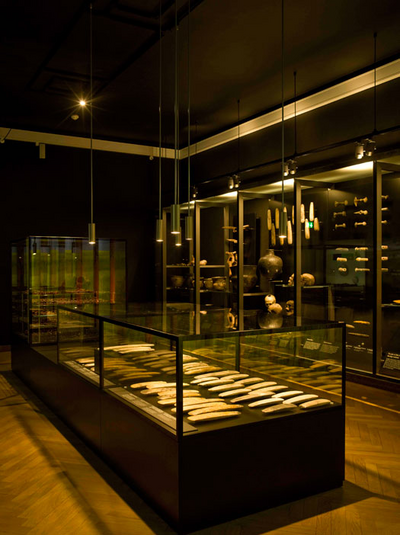Polished axes of flint
Around 4000 BC agriculture began to spread in Denmark. The farmers had to clear the primeval forest, fell trees and burn brush before the soil could be tilled. For forest felling and timber work polished flint axes were used. Flint was the most important raw material for making axes.
However, the flint axe was not just a tool. The axes were made of the best flint, and they were beautifully knapped and polished. The possession of flint axes was a sign of wealth and status. Collections of them were sacrificed and deposited in lakes. The lakes grew over and later became bogs. Many collections of axes have been found during peat-digging in modern times. Six of these collections – or hoards – of polished flint axes are exhibited at the National Museum.


